#and we only know of it because of a tony dalton interview???
Explore tagged Tumblr posts
Text
There's something entirely heartbreaking about the fact that Lalo dies soon after he has to leave his Malverde pendant behind.
Its that necklace you can see on Something Unforgivable when Lalo is working on his car, talking to Nacho about Don Eladio.
For the LONGEST time I was sure it was a Santa Muerte charm, which is no doubt on purpose, but then Tony Dalton mentioned on the shoebox interview that it was a necklace of Malverde, which OF COURSE it is, and now it really annoys me that they didn't commit to it.
You mean to tell me it wasn't on purpose that the episode in which Lalo starts actively trusting Nacho, his second in command, somewhat friends, is the same episode in which Nacho betrays and tries to kill him, and its the only episode in which you can see the pendant of Malverde — yk, the narco-saint that was betrayed and killed by his friend. The one that kept sharing and giving out his riches to the poor... 'Not at all' alike Lalo being the only Salamanca that seems to actually take interest in sharing his riches.
Nevermind that he doesn't actually die when Nacho betrays him, oh no - if only because he was barely a real friend, but he dies as a consequence of it. He just leaves his Malverde necklace on the decoy body, sheds himself of the protection he gives, and then fucking dies. An underwhelming, avoidable death.
It means a lot to me. They are the same, and Malverde sees it.
#Lalo is of faith enough to wear a narco saint charm#it works as a parallel between Something Unforgivable and Malverde's death#and we only know of it because of a tony dalton interview???#vince when i catch you#im sure its more likely that youre supposed to think its santa muerte#what with the twins being actively devoted to Her#But I doubt then Vince would've picked a Malverde pendant#either way i just kind of wish they were more intentional with it#it means a lot to me#bcs#lalo salamanca#better call saul
31 notes
·
View notes
Text
Best in the World preview
After getting confused about MLW Battle Riot, now I feel like I have to check to make sure all these shows are actually available to watch live!
Best in the World is $29.99 on Fite.tv, or $14.99 for Honor Club members, or free for Honor Club VIP members. (HonorClub is really only worth signing up for if you're already going hard for ROH.) The pre-show starts at 7pm EDT, and the main show begins at 8pm EDT.
Rush vs. Bandido - Bandido won the Survival of the Fittest tournament for the right to challenge Rush here for the ROH world title. Rush won the belt for the second time in February 2020 and, thanks to the pandemic, has only defended it three times since then. But this show kicks of Ring of Honor's return to live crowds, so maybe now we can get back to normal. This is the company's big chance to get the Rush era back on track, or to turn the page and start a new era with Bandido.
There really isn't anyone else like Rush in ROH. He just clobbers dudes, wins all the time, and looks like a star. He's not exactly Brock Lesnar, but he has an aura that makes him feel like he should be in a bigger company, and no one on this roster can carry his jock. I would figure the plan is to set up a rising young star to finally figure out how to beat this guy. Bandido would make sense in that role, but it's anyone's guess if that's the plan for him.
AEW wanted very badly to sign Bandido in early 2019, but he went with ROH instead because at the time no one knew if AEW was actually going to work. That gave ROH a huge opportunity to build their future around a top prospect AEW wanted but couldn't get. Instead Bandido spent the past few years lost in the shuffle with Lifeblood and the Mexisquad. I really feel like ROH dropped the ball with this guy. The fact he's suddenly on top now doesn't totally make up for that.
It's tough to pick a winner here. Rush is the logical favorite, but ROH might want to shake things up as they go back to doing shows in front of live crowds. An upset win for Bandido would create a lot of options for fresh title matches at upcoming shows. But if Rush retains, ROH will have the same problem Smackdown is having with Roman Reigns--how do you convince the audience that anyone is left that can beat this guy?
Jonathan Gresham vs. Mike Bennett - Bennett won a seven-man gauntlet to earn this match for Gresham's ROH pure championship. This title is contested under "pure wrestling rules," which basically limit rope breaks and add tighter restrictions on punches to the face and outside interference. Gresham is an expert at this type of match, whereas Bennett is new to the format.
Bennett (along with his wife Maria Kanellis) was a mainstay in ROH, and then had a decent little run in Impact before going to WWE as "Mike Kanellis." Everything went wrong with that WWE run, but at least that's led to Bennett receiving a lot of sympathy from fans as he picks himself up and keeps going. Since returning to ROH, Bennett has mainly been supporting Matt Taven in his feud. So this is an interesting way to get him spun off into his own thing.
The pure rules stuff doesn't do a lot for me, but I like the idea of a styles clash where one guy is completely out of his element. Gresham should wrestle rings around Bennett, but Bennett should be so tenacious that Gresham can't quite put him away. It wouldn't hurt Bennett to lose, although a Bennett title win would probably be such an insult to Gresham's pride that it could set up an intense long-term rivalry.
Honestly my main interest in this match is that I recently listened to a WARHORSE interview where he said he almost quit wrestling but Mike Bennett talked him out of it. So Bennett seems like a cool guy and I'm pulling for him.
Jay Lethal vs. Brody King - Back in March, King disrupted the feud between The Foundation and Los Faccion Ingobernable by introducing his own stable called Violence Unlimited. That's pretty much all there is to this match--it's just a Foundation guy and a VU guy facing off in the latest round of a three-way war.
It stands to reason that the winner of this match would move on to start something with LFI's leader, Rush. So unofficially this feels like a match to decide the next contender for the world title. However, Rush already defended the title against King in December and Lethal in February. So I don't know, maybe these two will just clobber each other and it won't matter who wins. That's how a lot of ROH matches feel to me, honestly.
Tracy Williams & Rhett Titus vs. Homicide & Chris Dickinson - Williams and Titus (of the Foundation) are defending the ROH tag team title. The challengers are representing Violence Unlimited. Dickinson came to ROH by way of teaming with Brody King on NJPW Strong, so he made good sense in King's ROH faction. Homicide was at the very first ROH show in 2002; before aligning with VU, it had been seven years since he appeared in the promotion.
This is another match where I can't get a feel for where things are headed, and I'm not sure it makes much difference. I guess my gut says they should put the title on the new team to get them over.
Tony Deppen vs. Dragon Lee - An injury forced Lee to vacate the ROH television title, which Tracy Williams won for the Foundation, who lost it to Violence Unlimited's Deppen, and now Lee wants to get it back for Los Faccion Ingobernable. Once again, I'm not sure it matters which guy ends up with the belt, but I'll go with Lee to win since the injury situation probably messed up their plans.
Shane Taylor & Moses & Kaun vs. Dalton Castle & Dak Draper & Eli Isom - Shane Taylor Promotions is defending the ROH trios title. Castle has been doing this weird passive-aggressive thing with Draper and Isom, so his latest move is to arrange this title shot behind their backs. It might be interesting to put the title on three guys who want championships but not with each other. But I'm fairly confident this just ends with Castle's team falling apart because he's a dick.
EC3 vs. Flip Gordon - When EC3 started here as a heel, he recruited Flip to help him fight Jay and Mark Briscoe; later as EC3 went babyface, he took exception to Gordon's cheating tactics. So now Flip is the target of all the weird cryptic multimedia presentations that EC3 likes to do for his opponents.
Flip used to be a beloved babyface, and it was just mildly amusing that he was a flat-earther in real life. Then he turned heel, and then he caught heat for complaining about face masks during the pandemic. So I'm pretty sure any goodwill Gordon had with the fans is gone by now. I don't see much upside in giving him the win now; pushing EC3 is the better bet for ROH.
Jay Briscoe & Mark Briscoe vs. PJ Black & Brian Johnson - I guess the Briscoes were having some issues but they've worked them out, so they're back in the hunt for the tag team title. Meanwhile Johnson seems to be getting frustrated under the mentorship of Black, and they're regrouping by making their own tag title run. Presumably the story of the match is that both teams want to be back on the same page, but only one of them really is. Pretty sure the Briscoes win this one.
Josh Woods vs. Silas Young - This is a "last man standing" match, so the match can only end when one participant is on the ground and cannot stand up again before the referee's ten-count.
Woods became Young's protege all the way back in September 2019, forming a tag team called, uh, "2 Guys 1 Tag." Right from the start I didn't expect that to last very long. But as it happened, what with the pandemic and all, Young didn't turn on Woods until March 2021.
You'd assume the point of all this would be to have Young put Woods over and establish Woods as a rising star for ROH's future. But it feels like every time ROH sets up something like this, they have the bitter old bully win to get heat. By the time they set up a rematch for the face to finally get vindication, I've usually given up and lost interest, which defeats the purpose of dragging the story out so long.
Demonic Flamita vs. Rey Horus - This is scheduled for the pre-show. Flamita, Horus, and Bandido were all in a trio called Mexisquad up until Flamita snapped and turned on the other two. Now he's "Demonic Flamita." I'm guessing the idea here is to give Flamita an impressive victory here to build up Bandido vs. Flamita to be a bigger deal.
PCO & Danhausen vs. The Beer City Bruiser & Brawler Milonas - This is also scheduled for the pre-show. PCO is basically a wrestling Frankenstein monster, but he's also Qubecer Pierre from the WWF in 1993, which still blows my mind. Danhausen is sort of like if Conan O'Brien played a character on What We Do In The Shadows. I like the idea of these two teaming up, and I hope it goes somewhere beyond prelim matches. I think the Bouncers (Bruiser and Milonas) turned heel when I wasn't paying attention, but that wouldn't be hard since I never pay attention to them. They should be easy pickings for PCOhausen.
3 notes
·
View notes
Photo

Bob Odenkirk on Naiveté, PTSD, and Kim’s Downfall
“The hardest thing for me was to play the naiveté of Jimmy as a younger person, where he starts in the series. You could say he’s become more cynical, but really, it’s self-awareness and I love that.”
Awards Focus: In interviewing your castmates, we’ve heard a lot of praise for your work. What stands out to you as a highlight for this season?
Bob Odenkirk: Well, we had a great season overall. But my favorite thing is the way Jimmy learns about himself and exhibits this sense of self-awareness. It’s great because the hardest thing for me was to play the naiveté of Jimmy as a younger person, where he started in the series. You could say he’s become more cynical, but really, it’s self-awareness and I love that. On the other hand, what he does with that self-awareness isn’t too good. He has these realizations about himself, but they give him an outlet to become ethically unmoored.
AF: Well, it’s funny because Kim, who seemed to know exactly who she was in previous seasons, looks like she’s losing herself. Does Jimmy worry that he’s opened Pandora’s Box?
Odenkirk: It’s a very strange thing, that last conversation. Because at first, you’re probably thinking that Kim’s just trying to make him feel less alone. Maybe she’s just trying to have some fun, make some gentle light out of those dark instincts Jimmy has. Or maybe she does it to make him feel a sense of his own limitations. But then those theories seem to fall flat, because Jimmy says, “Let’s slow down.” And she’s like, “No, no, no, let’s keep going.”
And she seems to genuinely mean it, to have some genuine delight in hurting Howard, who doesn’t really deserve it. Whereas Jimmy obviously pulls some crazy stunts, but those are more childish, almost like a teen prank.
AF: In talking to Jonathan Banks, we learned that he disagreed with the writers on some of Mike’s choices and he told them so. Do you have points where you’ve given the writers some pushback on Saul’s actions?
Odenkirk: Honestly, yes. There are moments where I say that “I think this is too far,” or that I don’t understand the choice. And most of the time, we’ll have a conversation where we come to some understanding on the story direction, which is to say I compromise (laughs).
After all this time, I like this character. I want him to make the right choices, almost like a friend. But sometimes the answer from Peter Gould is simply, “He’s not your friend, and he doesn’t make the right choices. That’s the story we’re telling. You don’t have his ear.”
And in the end, we know how those choices pan out. We’ve seen Breaking Bad and the road Saul takes.
AF: Yet there’s so much we don’t know, the arcs of other characters that have yet to be answered. Mike gives Jimmy a great speech about being on a specific road and not being able to get away from it. What road do you think Kim is on, going into season six?
Odenkirk: Well, I gotta say, when you see that last moment of season five, you get a glimpse at one of the core elements of the story. Because Saul is no longer asking himself who he is. Now he’s asking, Who is Kim Wexler?
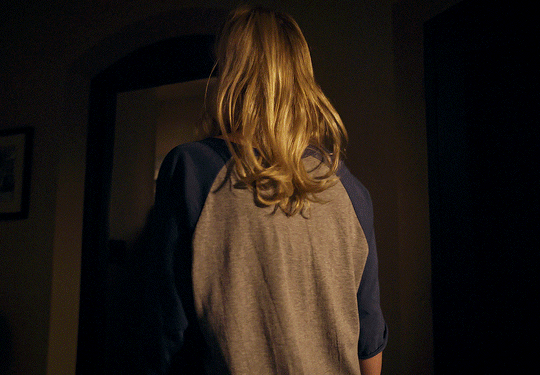
The woman who does that finger-point, gunshot gesture when asked if she’d harm an innocent man, who the hell is she? She’s done these little ethically compromised things, mostly as a team with Jimmy, with a kind of a sense of playfulness and partnership. But now there are real questions as to what’s going on in Kim’s head.
AF: The writers have certainly altered the status quo of the relationship between Kim and Jimmy over the course of season five. How do you navigate that as actors, especially in the context of broader character changes?
Odenkirk: There are definitely specific story choices and plot choices that are challenging to consolidate with the character. The moment where Kim asked Jimmy to marry her is one of those, where Rhea and I both wondered, How do we make this real? It was easier for me because all I had to do was act befuddled, which is how anyone in that situation would feel. It was harder for Rhea.
But I would say the hardest thing for me is when Jimmy’s doing a purely Saul Goodman thing, or doing something vindictive. It’s hard to understand that when you don’t have the instincts or life experience that might lead you down that road.
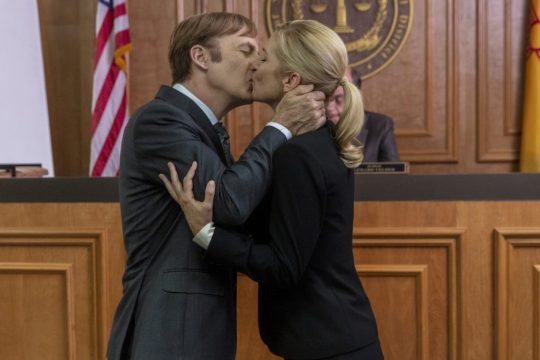
But that is a testament to the writers, they’ve given the character a sense of that now. Earlier on he would make these bad choices, and he seemed very blind to the ways in which these manipulative things would affect him and the people around him. Now he seems to understand how stuff can backfire. And he’s accepting that, moving forward with a stronger sense of realism. He’s choosing to be Saul Goodman in those moments. He’s more conscious about everything, from adopting the name to the flamboyant shoes and clothes. He’s choosing to play this role in part of his life, to give it a name, and to let that part of his spirit run rampant.
I love that development so much because the young Jimmy, he was hard to play because of his naiveté. As an actor, Saul’s self-awareness is great.
AF: In episode nine, you got to play a Jimmy who is not only physically beaten down from his trek through the desert, but also suffering from PTSD. It’s really unique to see him squirming in front of Lalo. Normally, he’d find something to say, but he’s in this weak state, and it’s just another facet you get to add to the character. The tension in that scene was incredible.
Odenkirk: Thank you. The thing is that Jimmy absolutely knows what’s happening. When Lalo says “Tell it again,” Jimmy knows he’s being played and prodded. He senses the danger, because this ploy can actually work. If you want to catch somebody in a lie, make him tell that story over and over. Jimmy knows what’s happening, but he’s too depleted to use his normal powers of logic twisting, to have the spirited energy for that kind of gamesmanship. But thank God, Kim comes through for him.
AF: Lalo’s terrifying in that scene and Tony Dalton brings so much to the character. What do you think’s going on in Lalo’s head as he listens to Jimmy?
Odenkirk: I think that was a tough one for Tony too, I imagine. You know, what’s going on inside that guy’s head who would usually just pull a gun and do it? He doesn’t care about anything.
But partly it might be that he figures he has Kim on his legal team. I mean, why not just keep her, she’s so good. If she’s got the grit and courage to give Lalo a piece of her mind, then she’s a good person to have on board.
AF: Vince Gilligan called episode eight the most challenging episode he’s ever directed. How was that experience?
Odenkirk: Yeah, filming in the desert was a brutal challenge, but even within the brutal challenge there was a kind of joy. I love when we have adventurous and physically demanding sequences. I just love it. One of the fun things about acting is going places that a real person doesn’t get to go very often. If they live their life with some degree of restraint and steadiness, it’s rare for one to find themselves lost in the desert.
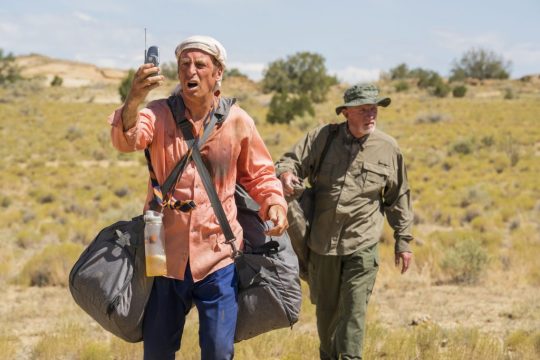
AF: During much of their desert trek, Jimmy carries two massive duffel bags filled with cash. Practically speaking, how was it acting with those for multiple days?
Odenkirk: If those bags had been filled with real money, they’d have been 75 pounds each. I don’t think I’d get that far with 150 pounds. Maybe a couple miles, which is a lot less than the distance Mike and Jimmy covered. But the bags were actually 40 pounds each, which is still very heavy. So the physical effort that shows up on the screen is very real.
AF: I’m assuming the heat was the bigger enemy?
Odenkirk: It was nightmare heat. And of course, you’re playing things over and over again. And Vince is an extremely thorough director who is shooting multiple, multiple takes from every angle. But it all worked out, because my suffering was essentially the character’s suffering. I was all for that stuff, as long as it was safe. When you have such a big crew and you’re out in the middle of nowhere with temperatures that high, it’s genuinely dangerous. It took a few days to bring in enough safety equipment to keep everybody on the crew cool. It’s definitely a bonding experience to take on something that big together and Vince did a wonderful job of shooting.
He could have made a two hour episode if he’d indulged himself with the amount of cool footage we got. But him condensing that, it was even more impactful that way.
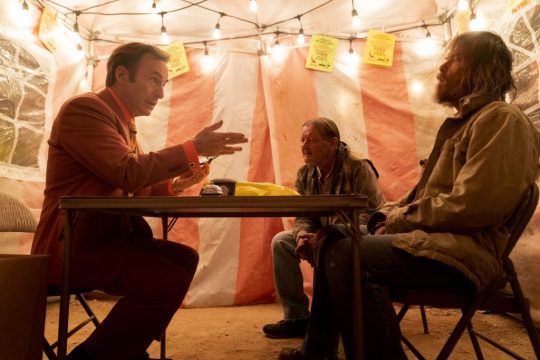
AF: This was a deeply dramatic season with some dark plots, but there was some comedic relief, like the cell phone tent scene. Is it as refreshing for you to perform those moments as it is for the audience to see them?
Odenkirk: Oh man, I have so much fun. I get really silly, and I really try to push it to the point where the writers want to tell me to pull it back a bit. But they wrote the character, and he’s a silly character, so I go with that. My trick is to go as far as I can, but try to sell it to an audience. For example, last season, I was at the grave pretending to feel at the one-year anniversary of Chuck’s death, because I know some of his law partners will come around to plant flowers and I want them to see me grieving. So I’m at the grave pretending to grieve and I’m actually saying “boohoo” as I cry. But I do it in such a way that someone approaching wouldn’t quite hear the word “boohoo.” I take these moments that the writers give me and push them as far as I can, because it’s really fun.
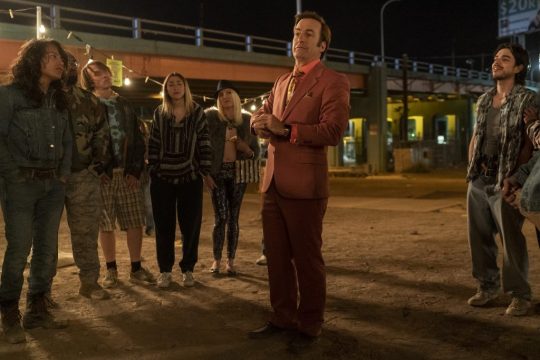
AF: One particularly funny moment featured Jimmy, a stunned Everett Acker (Barry Corbin), and a picture of a man having sex with a horse. What did you think when you read that, did you play around with various animal punchlines?
Odenkirk: No, we didn’t. It was written exactly that way and, in my opinion, it was perfect. By the way, Barry Corbin, who played Everett, is an absolutely great actor. I saw him in No Country for Old Men just the other day, and man, he’s great. I loved the absurdity of that horse picture scene. Jimmy knows how to rope in a client (laughs).
Part of AwardsFocus.com’s BCS interviews [x]
5 notes
·
View notes
Text
Saying goodbye to my hero, Sir Roger Moore. Baby, you were the best!

When I was 15 years old, I wanted to be Roger Moore.
If you saw my bedroom walls back then, you would know. Roger Moore found a place on all four of them. I broke out the Scotch tape to put up full-page magazine photos surrounded by Moonraker trading cards, and of course the Bond film posters. I had Moonraker and The Spy Who Loved Me to start with because those were the films that got me hooked on Roger Moore and James Bond. The For Your Eyes Only poster with those sexy legs came along after a while, and an Octopussy poster went up a few weeks before my high school graduation.
My mother called this the shrine, and she wasn’t far off. Roger Moore was my idol. My teenage life was measured in the two-year periods from one of his Bond films to the next. In between I got my chance to catch up with his two earlier films, Live and Led Die and The Man With the Golden Gun, when they appeared on the ABC Sunday Night Movie. Sure, I was also excited to see the Sean Connery movies for the first time, but completing my Roger Moore 007 experience was more important.
And, oh, that glorious week in the summer of 1980 when a double feature of The Spy Who Loved Me and Moonraker played at Cinema 18! Cinema 18 was Erie’s sleaziest theater; it used to be a porno house. But not even a questionable cinema floor was going to stop me from seeing Spy on the big screen—the way it was meant to be seen!—for the first time.
Also to mark time between films, I scanned magazines for interviews with Roger Moore and the TV Guide listings for talk show appearances. When Roger was on the Merv Griffith or Mike Douglas shows, I sat in front of the television set with my tape recorder running. Every golden word had to be preserved.
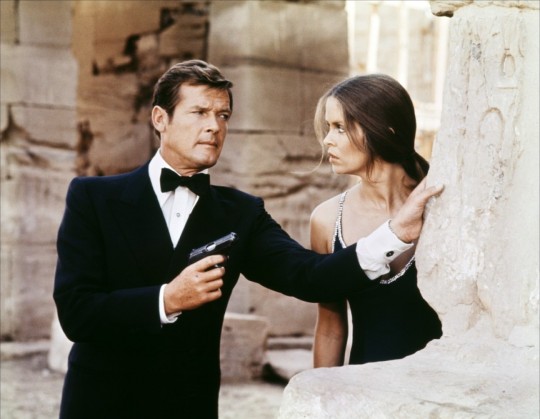
It may sound shallow, but in a large part I am who I am today because I saw The Spy Who Loved Me when I was 13. I’ve written about that momentous first viewing before, but I should point out that Spy was not my first James Bond film. I had previously seen Dr. No, From Russia With Love and most of Goldfinger—the first three Bonds, all starring Sean Connery.
But even though I had seen the films I would later consider Connery’s best, I didn’t connect with him the way I connected with Roger Moore that first time I saw Spy Who Loved Me. So what was it that drew me to Rog? I think that extra bit of cockiness helped. Roger Moore exuded cool invincibility.
The scene that most struck me comes near the end, just as Bond arrives at the oceanic base of the evil Stromberg (Kurt Jurgens). Bond steps inside an elevator with a trap door in the floor. Bond doesn’t know about the trap door, but we the viewers do because Stromberg used it at the beginning of the movie to drop his double-crossing secretary into the shark tank below. The elevator doors close, and Stromberg hits the button to activate the trap door.
The first time I watched this, I was tense. “Oh no!” I thought. I expected Bond to plunge into the tank, where he would fight the shark. But the shark tank on Stromberg’s monitor remained Bond-free. Then the elevator pinged and the door opened and there, to Stromberg’s surprise and mine, was Bond, his feet straddling the trap door. “You were expecting me to drop in,” he drawled.
That was one of those corny lines that sounded so natural coming out of Roger Moore’s mouth. Moore would always undercut his own talent, saying that all he could do was quip and raise his eyebrows, but he made it seem so effortless. If you want proof it’s not easy to deliver a throwaway quip, watch the last two Pierce Brosnan Bond movies. (I don’t like being mean to Pierce, but he got stuck playing Moore half the time and Connery the other half, and the discomfort sometimes showed.)
What I grew to admire above all else about Roger Moore was that he was suave. I wanted to be suave. I wanted to charm ladies with that kind of a deep, smooth voice. I wanted to put on a tuxedo and saunter into a tony nightspot on the Cote D’Azure. I wanted to go to a Cordon Bleu restaurant and order red wine with anything but fish (OK, I did learn a thing or two from Connery.) I never got to do any of those things, but I did teach myself to raise my eyebrow RM style.
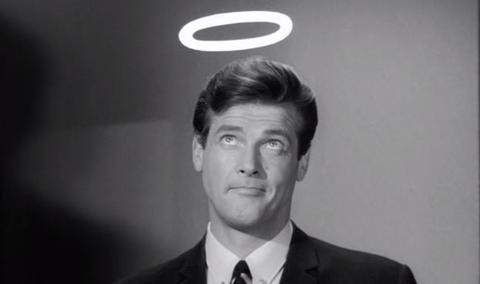
One of the benefits of being a Roger Moore fan in the early ‘80s was, thanks to the popularity of Spy and Moonraker, CBS started showing reruns of The Saint late nights during the week. This was my chance to get acquainted with Roger’s other signature role, and I grew to love Simon Templar nearly as much as James Bond and the works of Leslie Charteris soon joined those of Ian Fleming on my bookcase. However, because these episodes ran late on school nights, I tended to fall asleep in the last 15 minutes. I used to joke I had the endings to about a dozen Saint episodes locked in my subconscious. Several decades later I bought the DVD box set to finally learn how those episodes ended.
But it also wasn’t easy being a Roger Moore fan in those days, believe me. We had to contend with the older generation of 007 fans, the ones who condemned Roger Moore for committing the mortal sin of not being Sean Connery. The divide between Connery fans and Moore fans ran deep (nobody really talked much about George Lazenby back then). We Moore fans were constantly told we weren’t true Bond fans, as if we were less able to appreciate Ian Fleming’s novels because we came of age when Roger Moore was carrying the Walther PPK. The early James Bond fans clubs were run by people who hated Roger Moore and let us know it with every newsletter. The only book on the Bond films at the time, simply titled The James Bond Films, was written by a guy, John Brosnan, who also hated Roger Moore but had to grudgingly admit Spy was pretty damned good.
Time and three subsequent Bond actors have made this issue largely irrelevant, but things were heated when I was young and I admit I still have a bit of a chip on my shoulder. I probably don’t appreciate Sean Connery as much as I should because of it, but, truly, I don’t dislike any Bond actor. I appreciate what each of them has brought to the role. I just appreciate Roger Moore best.
When pushed hard enough, I would defend Moore’s Bond as more than a smooth quip machine. It would have been easier if Moore himself had been on my side. A master of self-deprecation, Moore would insist in interviews he never took Bond seriously. Asked how he made acting choices as 007, Moore would reply, “Sometimes I wear a white dinner jacket and sometimes I wear a black one.”
Despite his protestations, Roger Moore did take Bond seriously. He may be remembered for the grins and the one-liners, but he had his tough and poignant moments as well. Listen to calm, assured way he tells Melina, “We’re not dead yet,” before they are keel-hauled in For Your Eyes Only. Watch how he winces when Anya Amasova mentions his deceased wife in Spy. Look at the anger in his face when he discovers General Orlov’s plot to kill thousands with a nuclear blast in Octopussy. These aren’t the only moments. The insouciance Moore projected was what first attracted me to his 007, but on the proper occasion he knew how to make Bond human rather than superhuman.
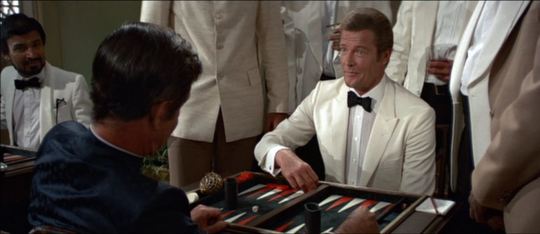
This leads me to Roger’s greatest 007 moment. It’s one that, curiously, won’t make many of the tribute compilations you can find online these days. It is a moment when he is at once smooth and steely and I can’t imagine Connery playing it so well (sorry, chip on my shoulder). You’ll find it near the beginning of Octopussy—the film containing Moore’s best performance, if you ask me—as Bond first confronts the villain, Kamal Kahn (Louis Jourdan, a dark reflection of Moore’s elegance) at the backgammon table.
Bond’s sharp eyes have caught Kahn cheating with a pair of loaded dice that come up double six when needed. Bond takes the seat across from Kahn and raises the stakes by betting the film’s MacGuffin, the Faberge egg. If Bond rolls anything but a double six, he loses. Bond connives to take control of Kahn’s dice, gives his opponent a cold stare, rolls the dice and—still locking eyes with Kahn—declares, “Double sixes.”
When I first saw Octopussy my good friend and fellow Moore Bond fan Brian Sheridan was seated next to me. “Whoah!” Brian said under his breath, “He didn’t even look down!” We knew we had just seen Roger Moore put proof to an earlier theme song: Nobody does it better.
I went to college and my Roger Moore posters came with me. Dorm rooms need decorations too. A new poster went up as Roger departed Bond with A View to a Kill—one film too late, but we’ll leave it at that. Another fellow came along, and a poster declaring Timothy Dalton as “The Most Dangerous Bond. Ever.” appeared on my wall shortly before I graduated Marquette University.
Roger Moore was no longer James Bond, but I was still his fan. Apartment walls also could use a few movie posters, I found. The burgeoning home video industry meant I could watch his movies pretty much whenever I wanted.
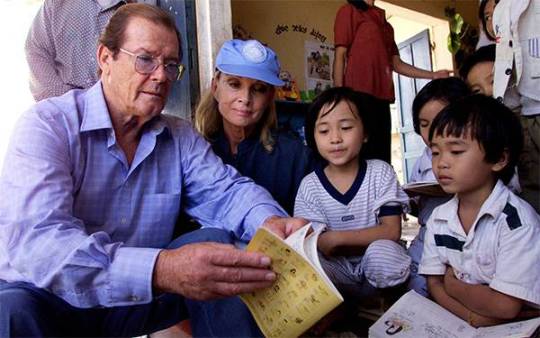
At the urging of his friend Audrey Hepburn (my all-time favorite actress), Roger Moore became a goodwill ambassador for UNICEF, and I found a new reason to admire him. He didn’t show up on the screen much anymore, but stories of his generosity continued.
When Pierce Brosnan’s first Bond movie, GoldenEye, was released in 1995 I was reading a magazine article about its production. One of the crew members interviewed for the story went off on an unexpected tangent. He said that the Bond film family, the regular crew that Cubby Broccoli had employed for decades, dearly missed Roger Moore. He treated everyone on set, from his co-stars to the grips, as mates and kept them all laughing. As improbable as it may sound, he said, a lot of the regulars would have loved to see Moore return as Bond.
Testimonials like that became common. It seemed no one who had ever worked with Roger Moore spoke an unkind word about him. Sometimes people would go out of their way to praise him. In a career retrospective for the AV Club, actress Nancy Allen started gushing—quite to her interviewer’s surprise—about working with Moore on a mostly forgotten TV movie called The Man Who Wouldn’t Die.
Although Moore was becoming more and more obscure on this side of the Atlantic, I could tell from press reports that the elder Moore was now regarded as a national treasure in the UK. After Desmond “Q” Llewellyn died in 1999, Roger gracefully stepped into the role of unofficial spokesman for the Bond franchise. When Roger became Sir Roger in 2003, I cheered.
In his later years, Sir Roger Moore became something of a magical person. Warmth and kindness and humor just seemed to flow from him. His tweets were hilarious, though he never missed an opportunity to raise consciousness about his beloved UNICEF. His speaking tours of the UK were interspersed with press reports of him grabbing a meal at a local restaurant, or even showing up at a pharmacy, and regaling everyone he met. It cheered my heart to see that my childhood hero was, by all accounts, simply a wonderful person.

In 2012, a dream came true for me. When Moore was promoting his latest book, Bond on Bond, to coincide with the 50th anniversary of the 007 films, I had the opportunity to interview him for the Chicago Sun-Times. It was just a phone interview, alas, but I still got to talk to my hero of 34 years. He was as warm and funny and gracious as I had hoped as we talked about kicking the car off the cliff in For Your Eyes Only and pulling pranks on Desmond Llewellyn. He broke my heart a bit when I asked about the Lotus Esprit from Spy Who Loved Me (still my dream car) and he said he didn’t like it. “My legs are too long.” Still, when I hung up the phone I was thrilled. It was one of the happiest days of my life. And when I concluded the conversation, I was careful to say, “Thank you for being my idol.”
Those words came back to me the morning of Tuesday, April 23. I had just arrived at the YMCA and wanted to take a quick look at Facebook before heading to my 8:15 aerobics class. Instead of the usual Snoopy cartoon, I got punched in the face by the first report of my hero’s death. I was angry at first. There were no other reports yet, so I assumed it was a hoax even though the source, the London Standard, sounded trustworthy enough. I went straight to Roger’s Twitter page, hoping to find a tweet saying, “Relax. I’m still alive.” Instead I found the statement from his children, and I knew it was real. My childhood hero was gone.
I didn’t make it to my aerobics class. I couldn’t look away from my phone as the tributes trickled in. I was grateful there was a box of Kleenex nearby in the lobby.
Several days have passed, and the Roger Moore tributes have continued. I was fortunate to participate in one on the Spybrary podcast. But of all the words said and written about Roger Moore since he passed, the ones that most struck me came from Ian Ogilvy, who succeeded Moore as Simon Templar in Return of the Saint. In a Facebook post, Ogilvy wrote: “If everybody could comport themselves in the style of Roger Moore, who was beloved by everybody and hated by none, the world would be a nicer place.”
When I was in high school, I imitated Roger Moore because he was suave. Now I plan to imitate him because he was good.
I am 51 years old, and I still want to be Roger Moore.
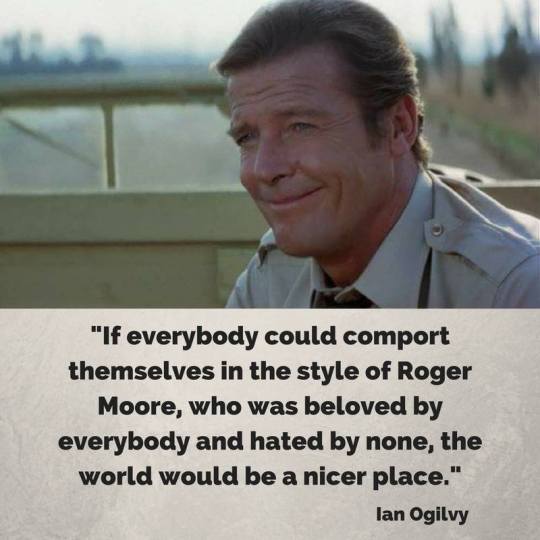
#Roger Moore#Roger Moore remembered#James Bond#007#The Saint#Simon Templar#UNICEF#Sean Connery#Pierce Brosnan#Ian Ogilvy#Live and Let Die#The Man With the Golden Gun#The Spy Who Loved Me#Moonraker#For Your Eyes Only#Octopussy#A View to a Kill#RIP
4 notes
·
View notes
Photo
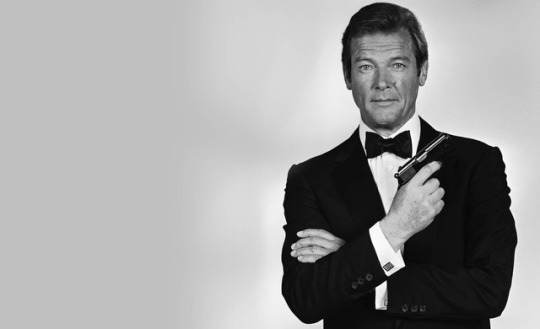
Latest story from https://movietvtechgeeks.com/rip-iconic-james-bond-roger-moore-dies-89-battle-cancer/
RIP: Iconic James Bond Roger Moore dies at 89 after battle with cancer
Best known for his iconic role playing James Bond, Roger Moore has died at the age of 89 after a battle with cancer. The Englishman also was suave as another hero, Simon Templar, in the British TV series 'The Saint.' “I would have loved to have played a real baddie,” he once said. Roger Moore, the handsome Londoner who portrayed James Bond in more films than anyone else and did so with cartoonish, cheeky charm and probably for a bit too long, has died. He was 89 (born on Oct. 14, 1927). Moore, who earlier made his reputation as a suave leading man on the television series Maverick, The Saint and The Persuaders!, died, with a message from his children shared on the actor's official Twitter account reading: "It is with a heavy heart that we must announce our loving father, Sir Roger Moore, has passed away today in Switzerland after a short but brave battle with cancer." It is with a heavy heart that we must announce our loving father, Sir Roger Moore, has passed away today in Switzerland after a short but brave battle with cancer. After George Lazenby was one and done as Bond in On Her Majesty’s Secret Service (1969), Moore took on the guise of Agent 007 in Live and Let Die (1973) and stayed for The Man With the Golden Gun (1974), The Spy Who Loved Me (1977), Moonraker (1979), For Your Eyes Only (1981), Octopussy (1983) and A View to a Kill (1985), which hit theaters when he was nearly 58. He said it was his choice to leave the franchise. His Bond was more of a charmer than a fighter, more of a stirrer than was the shaker embodied by the first Bond, Scotsman Sean Connery. Moore took on the role with a grain of salt, not to mention cigars — as part of his contract, he reportedly was given unlimited Montecristos during production. “My personality is entirely different than previous Bonds. I’m not that cold-blooded killer type. Which is why I play it mostly for laughs,” he once said. Moore’s devilish smile and famously cocked eyebrow made his Bond a more polished, albeit less pugnacious, chap than former bodybuilder Connery’s robust warrior. The late Amy Winehouse apparently was a fan. On her song “You Know I’m No Good” from the 2006 album Back to Black, she sings, “By the time I’m out the door, you tear men down like Roger Moore.” “I probably just rhymed with door,” he once said. “Or she couldn’t find anything to rhyme with Connery.” Moore played Bond more than any other actor — while bedding a total of 19 beauties, by one count — and his films earned more than $1 billion at the box office. But he considered himself to be the fourth-best 007, trailing Connery, Daniel Craig and Lazenby. And after leaving the series, he acted only sporadically. Earlier, Moore starred for six seasons as the slick Simon Templar, who makes a living stealing from crooks, in the popular 1962-69 series The Saint, which aired in the U.K. on ITV and in the U.S. on NBC (an international hit, it sold to more than 80 countries.) In an October 2014 interview, Moore lamented the fact that he pretty much always played the good guy. “I wasn’t an Albert Finney or a Tom Courtenay,” he said. “I didn’t have their natural talent, I had to work quite hard at acting. My life’s been all right, but people like that get to play wonderful parts. I spent my life playing heroes because I looked like one. Practically everything I’ve been offered didn’t require much beyond looking like me. I would have loved to have played a real baddie.” Roger George Moore was born on Oct. 14, 1927, in Stockwell, England south of the River Thames in London. An only child, he was evacuated as a teen during World War II to Worthing, Sussex in southern England while his father remained in London, serving as a police constable who sketched crime scenes. His first job was with Publicity Pictures Production, a film company in London, which specialized in animated cartoons. He worked as a tracer and filler-in, made tea and ran errands. After he was fired, a friend suggested he could make some easy money serving as an extra on Caesar and Cleopatra (1945), then filming outside London. He played a Roman soldier in a crowd scene in the film that starred Claude Raines and Vivien Leigh, and the experience put his life on a new course. He studied at the Royal Academy of Dramatic Art (with future Miss Moneypenny Lois Maxwell), and by the end of the first term, he managed to get into a West End production of The Italian Straw Hat. Moore quickly landed more parts, including a role in another West End Theater production, The Circle of Chalk. In 1945, Moore was drafted and entered officer training school. He was sent to Germany after winning his commission, commanding a small supply depot. During his tour of duty, he joined the Combined Services Entertainment Unit in Hamburg, doing traveling shows throughout Europe. Upon his discharge, Moore landed a role in the musical comedy Trotti True (1949) but then experienced a long period of unemployment. During this time, he joined a repertory company, the Intimate Theatre; performed in such plays as Noel Coward’s Easy Virtue; and supported himself as a model for things like knitwear and toothpaste. After he understudied for David Tomlinson in a West End production of The Little Hut, Moore moved to Hollywood and within days got a role on a 1953 episode of the live NBC anthology series Robert Montgomery Presents. He played a tennis player who is the object of Elizabeth Taylor’s flirtation in the MGM drama The Last Time I Saw Paris (1954), followed by parts in such films as the biopic Interrupted Melody (1955), starring Eleanor Parker and Glenn Ford; The King’s Thief (1955), with Ann Blyth and David Niven; Diane (1956) with Lana Turner; and The Miracle (1959), with Carroll Baker. Moore’s pretty-boy looks and confident manner elicited comparisons to a young Errol Flynn, and he landed his first starring role, portraying the title knight in the U.S.-British swashbuckling TV series Ivanhoe. He played swindler Silky Harris on the 1959-60 ABC series The Alaskans, and when James Garner quit Maverick in a breach-of-contract dispute, Moore stepped in as cousin Beauregarde “Beau” Maverick, even going so far as to wear the costumes that Garner had left behind. He would later quit the show as well. Disillusioned with television in the U.S., Moore starred in The Sins of Rachel Cade (1961) with Angie Dickinson and returned to England to make Romulus and the Sabines (1961), an Italian film about the founding of Rome. His co-star was Italian actress Luisa Mattioli, whom he married in 1969, after his divorce from singer Dorothy Squires was finalized. They had three children together before divorcing in 1996. British media mogul Lew Grade wanted Moore to star as Templar, the character created by author Leslie Charteris and played on the big screen by George Sanders in the 1940s (and by Val Kilmer in a 1997 film). His savoir-faire was perfect for the part, and Moore became an international celebrity. Grade also signed him to star in the big-screen thrillers Crossplot (1969) and The Man Who Haunted Himself (1970) — he considered the latter to be his best film — and then approached him with another TV series, The Persuaders! Moore played English nobleman Lord Brett Sinclair opposite Tony Curtis as rogue New Yorker Danny Wilde, and the mismatched pair solved crimes in exotic locations in the 1971 ITV-ABC series. Around that time, Moore also served as the European managing director of Brut Productions, the show-business wing of Faberge cosmetic works. Working around his 007 assignments, Moore appeared in Shout at the Devil (1976) with Lee Marvin, The Wild Geese (1978) with Richard Burton, The Sea Wolves (1980) with Gregory Peck and Niven and The Cannonball Run (1981) with Burt Reynolds. He also starred in the 1976 NBC movie Sherlock Holmes in New York (Patrick Macnee played Dr. Watson and John Huston was Professor Moriarty). In 1999, Moore was awarded the Commander of the Most Excellent Order of the British Empire by Queen Elizabeth II, and knighthood followed in 2003. He spent the past several years doing charity work as a UNICEF Goodwill Ambassador. Survivors include his wife Kristina, whom he married in 2002, and children Deborah, Geoffrey and Christian. After to describe his version of Bond in relation to others, Moore told NPR in November 2014: “I look like a comedic lover, and Sean [Connery] in particular, and Daniel Craig now, they are killers. They look like killers. I wouldn’t like to meet Daniel Craig on a dark night if I’d said anything bad about him. “George [Lazenby], Timothy [Dalton] and Pierce [Brosnan], we’ve been together, the four of us. But Sean, Sean really was sort of not that enamored of being confused with James Bond all the time. Sean … damn good actor, but he felt that he was only being remembered for Bond. I personally don’t give a damn. I just want to be remembered as somebody who paid his debts.
Movie TV Tech Geeks News
3 notes
·
View notes
Text
Rubem Fonseca renewed the short story and the novel by showing Brazilian reality
(photo: Zeca Fonseca / Divulgao)
“Every word has to be used”, he liked to say Rubem Fonseca when asked about the words and obscenities present in his more than 30 books. There, in the most police literature that Brazil had in the second half of the 20th century, everything was allowed. In life outside of books, however, Fonseca was a mystery. He gave very few interviews and hardly came. It was Zuenir Ventura who explained, in a loving text published in 2015, that the writer friend was not exactly a recluse – he did like to go to the cinema, meet friends and even travel – but Fonseca, killed yesterday afternoon, aged 94, in Rio de Janeiro, he was terrified of becoming a celebrity, of becoming more important than his own work. Until the closing of this issue, the family did not comment on the burial, which must be discreet because of the coronavirus pandemic.
The writer was admitted to the Samaritano Hospital, in Botafogo, in the capital of Rio de Janeiro. He suffered a heart attack at home and died in the hospital after a cardiac arrest. It would be 95 next May 11th. He wrote daily, as he told in literature events abroad, the only ones for whom he accepted invitations, since in Brazil, he refused to talk about the work. It is tempting to imagine what could come out of your head after the madness of the coronavirus pandemic that paralyzed the planet. Dark stories, with a lot of sex and violence, certainly, but with the art of handling the word that he well knew where to put to talk about a violent, unequal and sad Brazil.
“Z Rubem did not discriminate words for moral value, he worked with words for an aesthetic and ethical choice”, explains Ventura. “He had that dual personality of being a recluse, not giving interviews as a public figure and personally being a fun person. Sometimes I questioned Z about his way and he always answered: ‘I don’t know why I am like this’. ”
Rubem Fonseca was born in Juiz de Fora (MG), but grew up in Rio de Janeiro. It has a strange path when you take into account the books you have written. Graduated in law, he began his career as a police commissioner in So Cristvo, in Rio de Janeiro. At the Escola de Polcia, he was known for his understanding of psychology, the same that he applied to characters like Commissioner Alberto Mattos, from August, and to detective Ivan Canabrava, from Bufo & Spallanzani, to name two of his best known books.
Debut
With The prisoners, published in 1963, the author debuted on the literary scene, without any prior notice, since his career was more about the real police world than that of books. This meeting of 12 stories brought a collection of resilient and visceral characters, the same ones that would populate the author's world. Beggars, bandits, professional killers, murdered prostitutes, doubtful detectives, perverse investigators, the raw and brutal material, as well as the miner's own writing, was there, although it was with Happy New Year, from 1975, which he noted.
The book was banned during the dictatorship because it was considered “contrary to morals and good customs”. “We were censored and banned together in 1976”, recalls Igncio de Loyola Brando, who had the novel Zero vetoed on the same occasion. “From the censorship of our books – Happy New Year, Zero It's from Araceli my love, by Jos Louzeiro – the first major manifesto against censorship took place in 1977, signed by several intellectuals. ” The manifesto was organized by Lygia Fagundes Telles, Hlio Silva, Nlida Pion and Jefferson Ribeiro de Andrade and addressed to then President Ernesto Geisel
With the stories, Fonseca won his place, alongside Dalton Trevisan, as reinventor of Brazilian literature. “He was an important short story writer, somehow he renewed the brief narrative”, points out Milton Hatoum, author of Dois irmos. “The stories impressed me not only because of the form, but also because of the violence he was dealing with, urban violence. It had a lot to do with the climate of the dictatorship. I think there is this marriage in a brief way with a prosaic language and without elaboration, all linked to the theme of violence in a country that has always been violent, not only during the dictatorship ”, says Hatoum.
The short and far-fetched form of Fonseca's writing jumped from the short stories to the novels and in this style is a good part of the author's writing magic. The Morel case was the first, followed by The Great Art, starring lawyer Mandrake, a character who plunges into the underworld to investigate a murder.
Generations
Being a writer with more than five decades of career has many consequences, but perhaps the biggest one is the fact that it has influenced several generations of readers and authors. Virtually all of them, since the 1960s. “It was extremely important for a generation of writers who started to write influenced by his works”, says Michel Laub. “They are works that do not age,” he guarantees.
Tit Tony Bellotto, author of detective novels, as Bellini and the Sphinx, also has Fonseca as a reference. “He inaugurates urban literature in Brazil and leaves a monumental legacy. Happy new year was like a revelation; it was different from everything I read at school, ”he says.
About 10 years younger than Fonseca, Igncio de Loyola Brando has good stories of this friendship. They traveled together a few times to attend literary events. In Israel, during one of these meetings, Fonseca was charged with speaking for the group and planting a tree. “Nobody knows, but I was always a dendrlatra”, he would have said, in the speech of the ceremony. No one knew the meaning of the word, used to describe lovers of trees and nature. “Rubem showed that you could write police literature in this country,” says Loyola. “His characters are people we know, who we see on the street, in the offices, they are our friends. I had known for some time that he was not well. L if he was a friend of more than 50 years, ”he concluded.
* Vinicius Veloso collaborated, an intern under the supervision of Igor Silveira
The post Rubem Fonseca renewed the short story and the novel by showing Brazilian reality appeared first on Cryptodictation.
from WordPress https://cryptodictation.com/2020/04/16/rubem-fonseca-renewed-the-short-story-and-the-novel-by-showing-brazilian-reality-2/
0 notes
Text
Rubem Fonseca renewed the short story and the novel by showing Brazilian reality
(photo: Zeca Fonseca / Divulgao)
“Every word has to be used”, he liked to say Rubem Fonseca when asked about the words and obscenities present in his more than 30 books. There, in the most police literature that Brazil had in the second half of the 20th century, everything was allowed. In life outside of books, however, Fonseca was a mystery. He gave very few interviews and hardly came. It was Zuenir Ventura who explained, in a loving text published in 2015, that the writer friend was not exactly a recluse – he did like to go to the cinema, meet friends and even travel – but Fonseca, killed yesterday afternoon, aged 94, in Rio de Janeiro, he was terrified of becoming a celebrity, of becoming more important than his own work. Until the closing of this issue, the family did not comment on the burial, which must be discreet because of the coronavirus pandemic.
The writer was admitted to the Samaritano Hospital, in Botafogo, in the capital of Rio de Janeiro. He suffered a heart attack at home and died in the hospital after a cardiac arrest. It would be 95 next May 11th. He wrote daily, as he told in literature events abroad, the only ones for whom he accepted invitations, since in Brazil, he refused to talk about the work. It is tempting to imagine what could come out of your head after the madness of the coronavirus pandemic that paralyzed the planet. Dark stories, with a lot of sex and violence, certainly, but with the art of handling the word that he well knew where to put to talk about a violent, unequal and sad Brazil.
“Z Rubem did not discriminate words for moral value, he worked with words for an aesthetic and ethical choice”, explains Ventura. “He had that dual personality of being a recluse, not giving interviews as a public figure and personally being a fun person. Sometimes I questioned Z about his way and he always answered: ‘I don’t know why I am like this’. ”
Rubem Fonseca was born in Juiz de Fora (MG), but grew up in Rio de Janeiro. It has a strange path when you take into account the books you have written. Graduated in law, he began his career as a police commissioner in So Cristvo, in Rio de Janeiro. At the Escola de Polcia, he was known for his understanding of psychology, the same that he applied to characters like Commissioner Alberto Mattos, from August, and to detective Ivan Canabrava, from Bufo & Spallanzani, to name two of his best known books.
Debut
With The prisoners, published in 1963, the author debuted on the literary scene, without any prior notice, since his career was more about the real police world than that of books. This meeting of 12 stories brought a collection of resilient and visceral characters, the same ones that would populate the author's world. Beggars, bandits, professional killers, murdered prostitutes, doubtful detectives, perverse investigators, the raw and brutal material, as well as the miner's own writing, was there, although it was with Happy New Year, from 1975, which he noted.
The book was banned during the dictatorship because it was considered “contrary to morals and good customs”. “We were censored and banned together in 1976”, recalls Igncio de Loyola Brando, who had the novel Zero vetoed on the same occasion. “From the censorship of our books – Happy New Year, Zero It's from Araceli my love, by Jos Louzeiro – the first major manifesto against censorship took place in 1977, signed by several intellectuals. ” The manifesto was organized by Lygia Fagundes Telles, Hlio Silva, Nlida Pion and Jefferson Ribeiro de Andrade and addressed to then President Ernesto Geisel
With the stories, Fonseca won his place, alongside Dalton Trevisan, as reinventor of Brazilian literature. “He was an important short story writer, somehow he renewed the brief narrative”, points out Milton Hatoum, author of Dois irmos. “The stories impressed me not only because of the form, but also because of the violence he was dealing with, urban violence. It had a lot to do with the climate of the dictatorship. I think there is this marriage in a brief way with a prosaic language and without elaboration, all linked to the theme of violence in a country that has always been violent, not only during the dictatorship ”, says Hatoum.
The short and far-fetched form of Fonseca's writing jumped from the short stories to the novels and in this style is a good part of the author's writing magic. The Morel case was the first, followed by The Great Art, starring lawyer Mandrake, a character who plunges into the underworld to investigate a murder.
Generations
Being a writer with more than five decades of career has many consequences, but perhaps the biggest one is the fact that it has influenced several generations of readers and authors. Virtually all of them, since the 1960s. “It was extremely important for a generation of writers who started to write influenced by his works”, says Michel Laub. “They are works that do not age,” he guarantees.
Tit Tony Bellotto, author of detective novels, as Bellini and the Sphinx, also has Fonseca as a reference. “He inaugurates urban literature in Brazil and leaves a monumental legacy. Happy new year was like a revelation; it was different from everything I read at school, ”he says.
About 10 years younger than Fonseca, Igncio de Loyola Brando has good stories of this friendship. They traveled together a few times to attend literary events. In Israel, during one of these meetings, Fonseca was charged with speaking for the group and planting a tree. “Nobody knows, but I was always a dendrlatra”, he would have said, in the speech of the ceremony. No one knew the meaning of the word, used to describe lovers of trees and nature. “Rubem showed that you could write police literature in this country,” says Loyola. “His characters are people we know, who we see on the street, in the offices, they are our friends. I had known for some time that he was not well. L if he was a friend of more than 50 years, ”he concluded.
* Vinicius Veloso collaborated, an intern under the supervision of Igor Silveira
The post Rubem Fonseca renewed the short story and the novel by showing Brazilian reality appeared first on Cryptodictation.
from WordPress https://cryptodictation.com/2020/04/16/rubem-fonseca-renewed-the-short-story-and-the-novel-by-showing-brazilian-reality/
0 notes